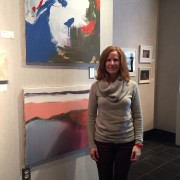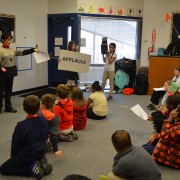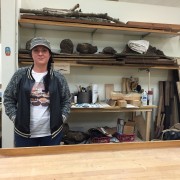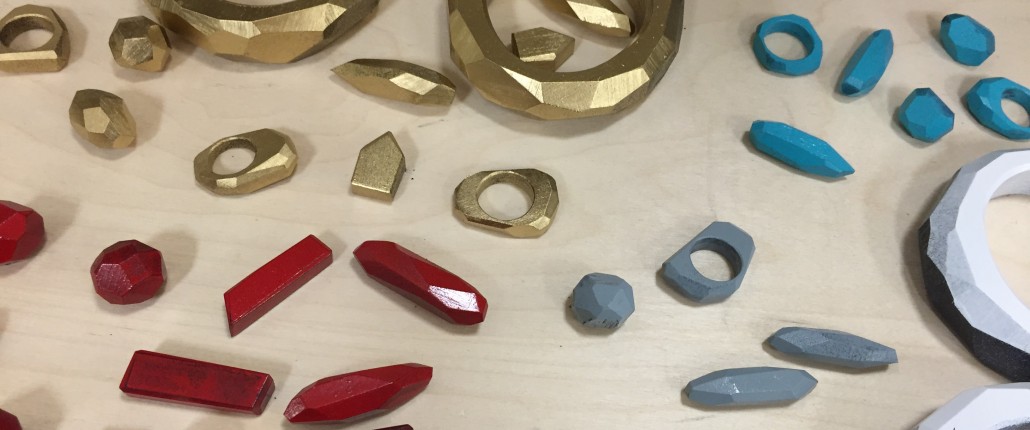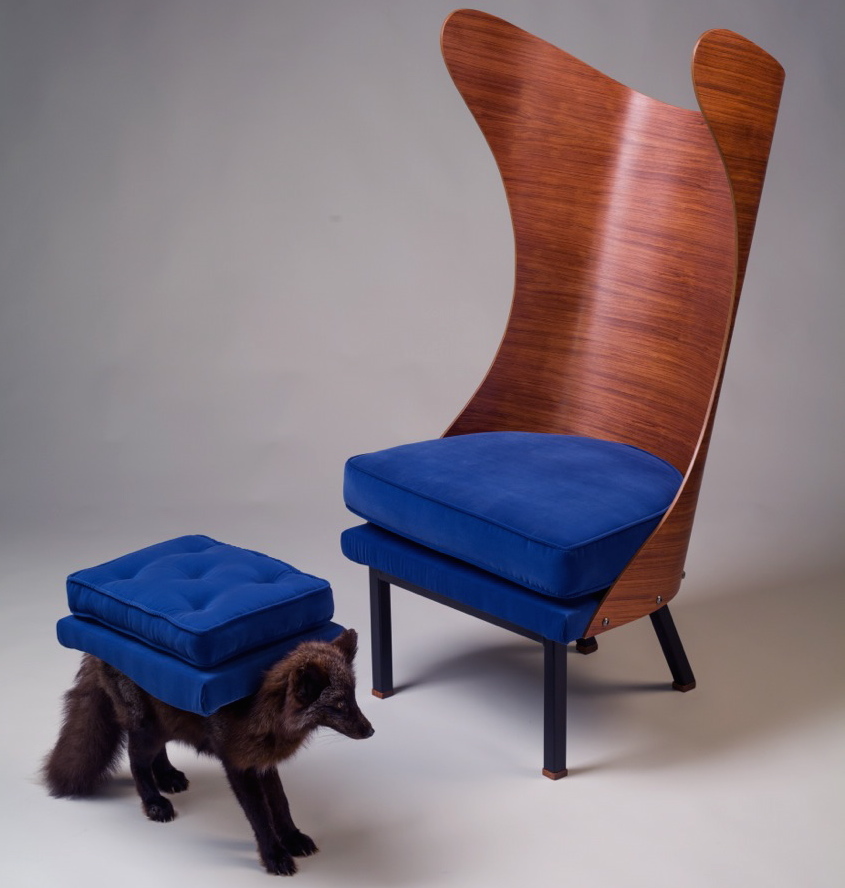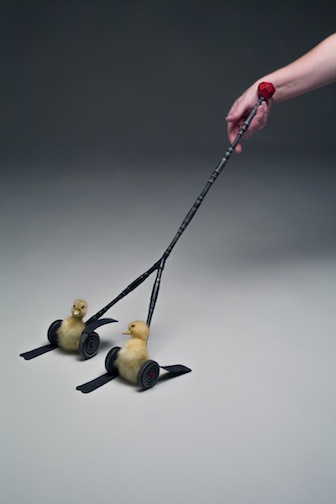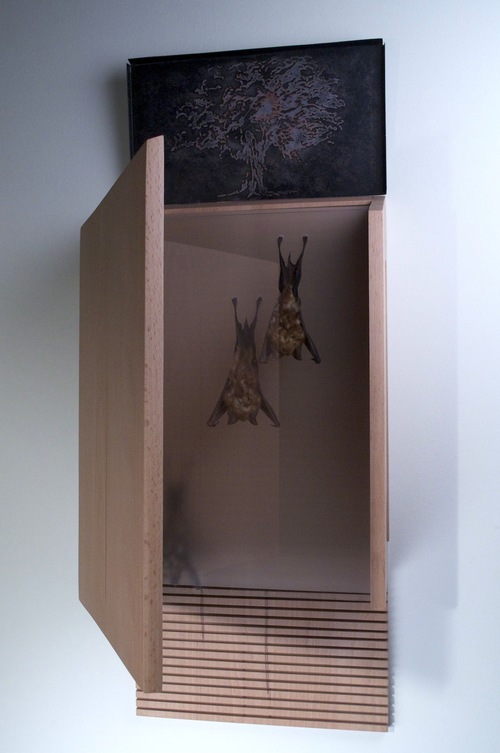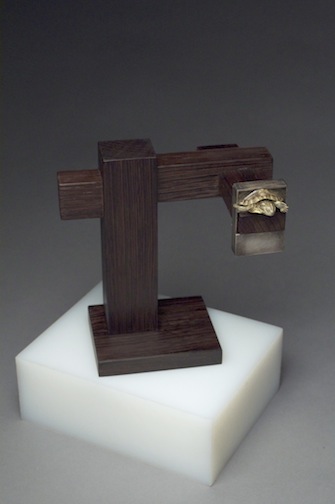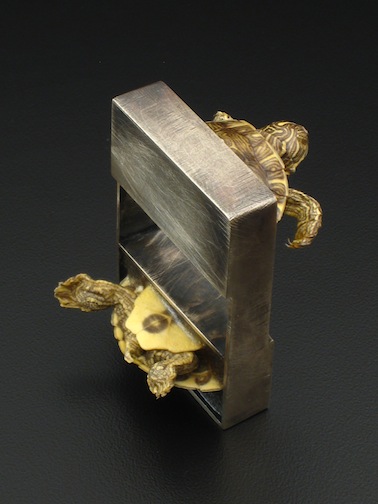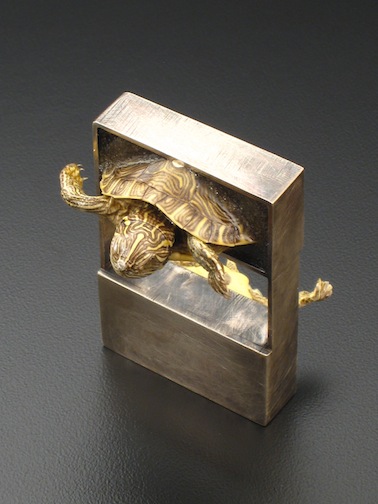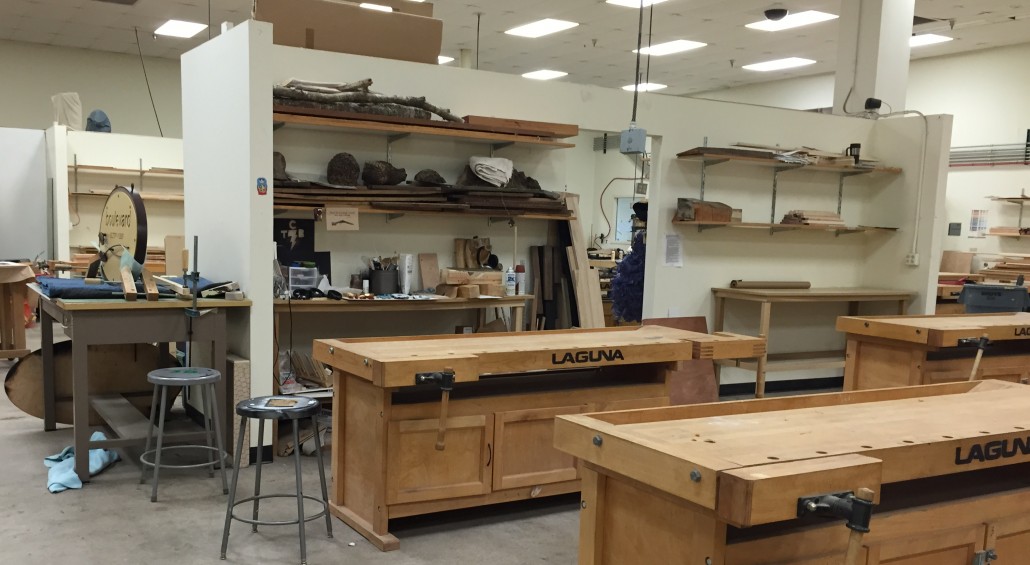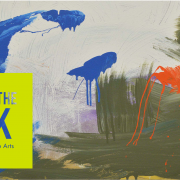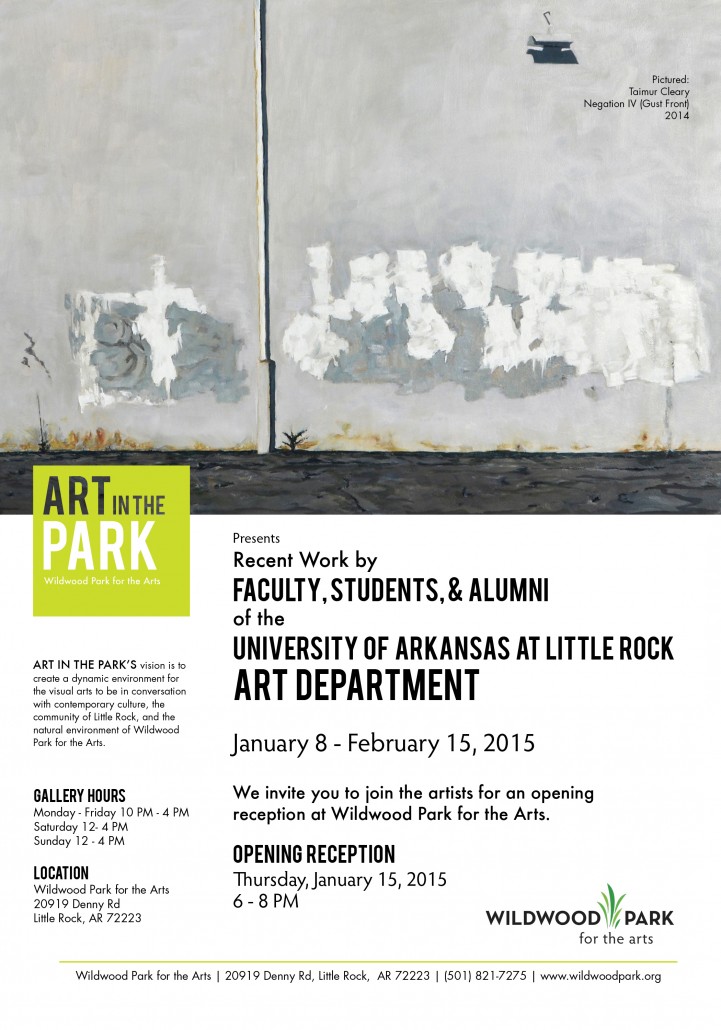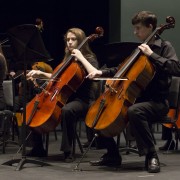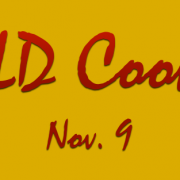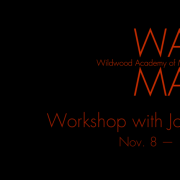Art in the Park: An Interview with Artist Amanda Hubbard
I asked myself what I want do with my life? What do I want to spend my life doing? Where do I feel comfortable? I realized I wanted to be where I am learning and growing but also feel like myself at the same time. Art it was, for sure.
Arkansas runs deep for Amanda Hubbard. A native of Redfield, a railroad town on the edge of the delta, Hubbard grew up designing, making, and creating. It started with an “aluminum foil purse for my Grandma, my Nanny,” she said. In school she loved her art classes, and when she studied art in the Arkansas Governor’s School summer program she finally found her utopia. “They had art, music, psychology, and film – all these different things. And no TV’s – it was a long time ago, so no cell phones either. We had to entertain ourselves, which allowed us to be more creative.”
After earning a Bachelor and Master Degree in Sociology, she knew there was something lacking: “Not being able to use my creativity as much as I believe I need in my life. I figure you’re given these gifts, these abilities, and then you don’t use them. It’s like something you enjoy doing, but you never get to do it.” Finally, after a birthday she was honest with herself. “I asked myself what I want do with my life? What do I want to spend my life doing? Where do I feel comfortable? I realized I wanted to be where I am learning and growing but also feel like myself at the same time. Art it was, for sure.”
How do you think your sociology background has affected your painting? Do you see a connection or do you see this as a new adventure?
I am glad you asked that. Sometimes I see different things in other people’s work; I don’t notice themes so much about mine. If people are talking about their art or I see something, it makes the connection with sociology, like feminism or things like that. It’s always kind of there, but certain things spark it at different times. There is nothing I am consciously connecting between my painting and sociology.
Is there any inspiration behind your process or is it about the physical act of painting?
I think I draw inspiration from being in the moment and being very present and very conscientious of what you do. I am not sure how I am going to do my thesis show yet. I am trying to figure out if I need to feel a specific emotion to paint that emotion at that moment. It’s hard to be in the present all of the time, so of course you are going on memories here and there. I go from being in the present, to being in the past, to being in the present, to being in the future all of the time. To me, that’s very challenging. I don’t look at anything when I paint. If I were more of a realist I would have something to look at and I would go off of that. I don’t do that as an effort to be in the present.
I feel like being in the present is a constant struggle as a painter. How do you paint something new without thinking about all of that history, the baggage of paintings before you?
You’d have to have amnesia. I focus on trying to be in the present, that mindfulness of trying to be. It makes you more aware when you are not. That’s part of it. I really try to be in the present but also pepper it with the past and the future.
How does your studio process work? Can you describe your average day in the studio?
I usually work on the weekends, I love being in the studio at school when no one is there. It takes a while to get my things out. I have different things in different places. I usually try to do more than one painting at a time. Last night I did three. So I have gallons of paint that are separated into smaller jars. I mix different colors of acrylic enamel house paint from primary colors. I use large and rectangular Tupperware containers to store the colors I have already mixed. I have them because I thought that would be the best for my large brushes. When I first started I was experimenting with brooms and things. I need something large. I got back in touch with how to mix my own colors.
Then I pull brushes and I just start going. I just start. I really, over time, have learned not to fret or manipulate. I can’t keep messing with it, or else my paintings turn out horrible. Now I just dive in, I just go until I feel like it’s at the line where I feel like it is complete. There is that fine line between painting too much and not enough. I try to find that line.
Do you work at multiple paintings at the same time?
I do one at a time. I was thinking I might want to try to do two at the same time, like Joan Mitchell does her paintings. I read that because her paintings were so large she divided them in half to make them more manageable. I think that is something I will try in the future.
How long do you spend on one painting?
I spent over an hour to do three last night. But I am working a lot of that time and I am looking. So its not like I am listening to music or that kind of thing. I am doing actual painting during that entire time.
When you finish do you ever come back to the painting and do another layer of paint?
Usually, when I finish, that’s it. I started off doing traditional landscapes before the more abstract. I started with 8 inch by 10 inch canvases, and those were more layered in the beginning. With the bigger ones, I just want that moment in time to be captured. To me it’s more difficult to go back to fix something; it just doesn’t work that well. It’s missing the present moment. I thought about trying it, but I don’t know how it’s going to roll out.
Do you have a project plan when you work? Like how many paintings to display in a space?
It’s as it comes. I try not to expect too much. I know by doing you just got to do. It may not be the best, it may not be a masterpiece, but you are doing. It’s an art practice, so you are practicing. Like some people practice a piano, you have to practice painting. That way of thinking just came about. I used to think each piece had to be a gem. But over time I got over that and realized each piece may not be a masterpiece. If it’s not, I’m like, “Hey I can just paint over it, that’s okay to.” I not try to be too attached.
Any artists you’ve been specifically looking to for inspiration?
I was looking initially at Richard Diebenkorn and his topography pieces. I like how he took landscapes but made them into abstractions. I liked his colors. Then I became interested in de Kooning and his spontaneous, painterly marks. He seemed to express a lot of emotion in his painting. I have a similar process to Joan Mitchell, style not so much. I had never heard of her until recently and felt cheated that I had never heard of her before. It’s terrible. I took a woman in art and music class and she was in that book, but I dont know if we ever touched on her. There are not a lot of women artists that are really studied and given the kudos that they deserve.
Especially in abstract expressionism.
Jackson Pollock and the men got all of the accolades. I would really love to see Joan Mitchell’s work in person someday. To me, it looks huge and all encompassing.
How do you choose your colors?
I pull a little from de Kooning and Diebenkorn. Diebenkorn the earthy tones, and de Kooning the bright colors. Last night I had a tank top and pair of underwear right next to each other, and I thought to myself, “I really like those colors; I’ll have to mix those up.” I think its just colors I really like together or that catch my attention.
How often do you refresh your palette? How many Tupperware are we talking at one time?
About ten at one time. If I get an idea for a color I just mix it up. I have a contractors’ paint sample fan that a neighbor gave to me. I think I might start taking my colors to Home Depot to get them mixed in large quantities. I didn’t know what colors I wanted a gallon of until recently. It’s a commitment. I think I am going to have them mix specific colors that I have figured out that I like. As time goes on I will probably keep adding to that palette.
How would you describe the art community in Little Rock?
I think it’s growing. I know I had been out of the community for a few years, and I think the art scene is definitely more accessible if you are a student. It seems like you find out more about things that are going on, like artist talks. I can compare being in class to not since I have moved back in 2006, and I know a lot more than I did by being at UALR.
What have you found to be the best way to talk to other artists or your audience?
I talk with most artists through classes, my peers and professors. I have friends who are artists and that helps to have friends in the greater community. My friend Robert Bean organizes art events here. My brother is a photographer, so he hears about stuff. Facebook is really helpful to get invited to different events and things.
Have you used social media to get your work out to a wider audience?
When I’ve had artist receptions I’ve invited people via Facebook. I post paintings as I’m working on social media. When I’m watching the paint dry, literally, I’ll post pictures. Its fun to show people what your doing.
I love the drips.
Sometimes I have water. I use a spray bottle. I erase sometimes with any kind of color. I like painting over other paintings, so the painting before shows through the current one. For Puerto Viejo I used a broom for the blue going into the red, I was experimenting with that. I tried a sponge, a tampon. I tried whatever I could get to get different strokes. Right now I have up to five-inch paintbrushes. I love that I have everything from really small to 5 inches.
What’s the biggest size canvas you have used?
36 by 48 probably. I have some bigger canvases at my house I am hoping to give a whirl. I am hoping to work bigger because it feels like it encompasses you more, but I also think you can get the point across at a smaller size.
What is exciting you the most right now?
I love the 5-inch brush. I think it’s a deck painting brush to do stains. I got a couple of those that I like to use. I think now the choice comes from figuring out which brush size to use, of course color too, but I have such a range in brush size now. In the beginning I focused on minimal strokes with bigger brushes, but that works sometimes and sometimes it doesn’t. I think I go back and forth. Like last night I tried to see how few strokes I could use to make what I wanted to make. That’s a challenge in and of itself. It’s all a part of not expecting a masterpiece. You just have to try it. I don’t know how successful you could be if everything you worked on turned out great.
What’s next for you?
I am applying to graduate school for my MFA. I hope to learn a lot from being around a group of artists. I think it really helps to be around people who can give you honest feedback and constructive criticism. The energy that comes from that is helpful. I’m really looking forward to learning and the experience of it in and of itself.
Do you have any goals for your work? Do you see it in a gallery space or in someone’s home?
I would really like to teach, to be an art professor at a university, because I think it’s really important that people express themselves. There are few places you can really do that besides the arts. Those are the places where you can express yourself freely, and there are no boundaries or limitations. As a teacher, I can do my work but also inspire students as they inspire me. It sounds like a nice way of living.
How would you describe being a successful artist?
That’s a really good question. I’m not really sure. I think it depends on what your definition is. I think that for me if I do work and people see it, whatever shape or form that is, I think it’s successful. If someone buys it, that might be successful, too.
A painting is successful when I like the painting when I am done. Actually liking something that you have done and being able to own it – that’s part of being successful, too. You might do something and someone likes it, but what’s the point if you don’t like it.

